You’ve driven by one or several of them. The baby blue sign with Roman letters spelling out “Kumon”, but the O is an ambivalent-face. Boisterous Okinawan kids head in and out with their blue and yellow Kumon messenger bags. Perhaps you wonder what is going on in there.
Or maybe you’re better-informed than I, and you already know that Kumon is a worldwide extracurricular reading and math program–the world’s largest, in fact, according to its website. Here in Okinawa, it also offers a Japanese language program for English speakers (and one for Portuguese speakers).
To be honest, I originally had zero intention of learning Japanese; I’ve had my linguistic heart jerked around too many times. I’ve studied spatterings of Greek and Latin and did decently in Spanish for about 5 years. I took German when my fiance got orders to Germany, then his assignment was switched to Italy. I picked up a little Italian while there, forgetting most of my German and obfuscating any Spanish I might have retained. After Italy, I spent 10 months trying to learn Arizonan, then we landed here. I figured I would learn just enough to be polite (I’m not a big talker to strangers, so that would be “hello”, “thank you”, and possibly “goodbye”) . Secretly I worried that if I learned Japanese I would end up watching obscene amounts of anime, reading fantasy manga and wooing a Webkare. Come on, you all knew those people in college.
I changed my mind before the plane landed at Naha. It is incredibly frustrating to not even be able to read simple signs or ask where the coffee is or say that you have to go backward through the security checkpoint because you left your wallet in the bathroom. And it’s just rude. Almost immediately I met a friend with a baby the same age as mine who mentioned going to Japanese tutoring twice a week, and being able to bring the baby. (At the time they weren’t walking, eating much to speak of, or shrieking just for the fun of it.) I tagged along with her and was sold.
The Kumon Japanese language program is tailored to your pace. You are given a tiny textbook with a CD so you can hear correct Japanese pronunciation and read along. You are also given homework sets–little 10-page booklets where you practice your reading, writing, and sentence-composition skills. This makes it sound scarier than it is–it is designed to be quite easy, with lots of repetition. Your teacher assigns your homework based on what she thinks you need to repeat (I generally do every homework set about twice, which suits me just fine since I don’t study other than that). You go twice a week on the days that your Kumon center is open, any time during their hours. I started out knowing absolutely nothing in May and am now at a point where I know the whole hiragana syllabary and can compose simple sentences. If you cannot finish your homework or have to skip a day, they work around that. They are very accomodating.
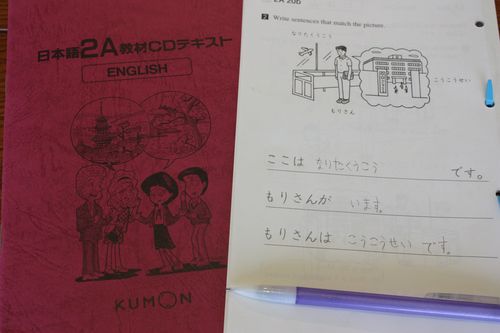
My work from a couple of weeks ago
Kumon is a tutoring center for school kids; mine is set up with about 10 long desks with 2 stools at each. There are usually lots of kids in there doing their own self-paced work just as you will be. (It is rather cramped, so as soon as my baby was walking I started getting a sitter for her.) You enter, give your homework to one of the three teachers to be graded, grab a discman, follow along with your textbook/CD assignment for the day and complete the accompanying worksheets. Then you have oral practice with one of the teachers, fixing any mistakes in your homework and classwork and reading selections from your work to her. For me, this oral practice was terrifying for a while, but invaluable in the end. Recently she’s started doing oral practice with me using objects from around the room instead of the book, so that’s stretched me even further.
The one drawback is that so far, I am not learning particularly practical things at Kumon. I enjoy language-learning just because I think it’s fun and interesting, so that’s not a problem for me. I can name lots of animals and say “The train arrives at the station” but am only now learning how to introduce and address people. If you are looking for a high-speed launch into Japanese conversation, this isn’t for you. But if you’re someone who needs to know how to write something in order to remember it (me!), who wants to be able to read all those signs you’re driving by, and who needs a flexible program, this is definitely a great option. Plus, you’re being immersed in Okinawan culture while you’re doing it–I’m always the only American in there. The program would also be doable for kids, (though I’m not sure how young) and a good supplement to a homeschooling program.
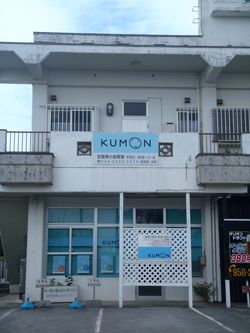 Directions: There are Kumon centers all over, including at least 3 or 4 within reasonable reach of Torii Station on Route 6. The one I attend is just off of Route 16. With the Torii Starbucks behind you, go down Route 16 toward 58/Kadena. Turn left at the second stoplight (the first stoplight is just a crosswalk), go down a couple of blocks, and Kumon will be on your left next to the Minami sushi restaurant. The 2 parking spots in front of Kumon are usually full, so you can park behind the building in the large school parking lot next to the sports field.
Directions: There are Kumon centers all over, including at least 3 or 4 within reasonable reach of Torii Station on Route 6. The one I attend is just off of Route 16. With the Torii Starbucks behind you, go down Route 16 toward 58/Kadena. Turn left at the second stoplight (the first stoplight is just a crosswalk), go down a couple of blocks, and Kumon will be on your left next to the Minami sushi restaurant. The 2 parking spots in front of Kumon are usually full, so you can park behind the building in the large school parking lot next to the sports field.
Hours: Tuesday and Friday 2pm-8pm (for this center only)
Phone: 090-5293-2876
Cost: 8,400 yen per month and 1,050 yen per textbook/CD (How long your textbook lasts depends on how fast you move; mine last about 6 weeks.) Cash, paid at the beginning of each month.
Editor’s Note: Kumon is offered on Kadena at the Schilling center, but I believe it is only offered for children.


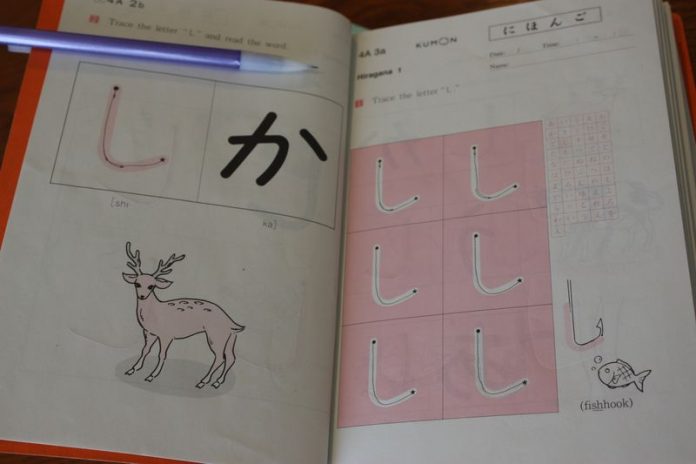

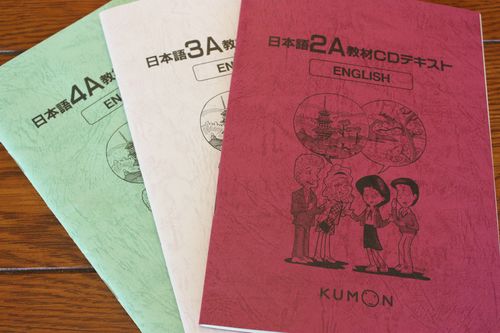
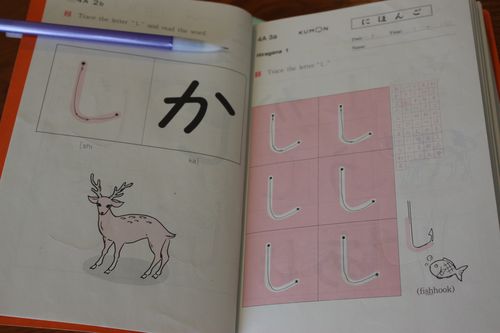
The Kumon at Schilling is raising prices from $55 a month to $75 a month starting in June. For any parent wanting to enroll their child in Kumon math, I would have to say that you would be better off saving your money and printing out page-after-page of math problems for your child to work on at home. They don’t do any instruction or tutoring at Kumon. You pay for your child to sit at a table and do packets of math problems. Basically, they are teaching your child to memorize rather than understand the math they are doing. You can do that for next to nothing at home.
The Kumon at Schilling teaches Math and Japanese. My daughter is 14 and has been taking the courses for three months and what an improvement. I highly recommend this program. It’s only $55 a month per subject you can’t beat that!
Probably a dumb question but….. I have some friends here in Oki that are AF wives and they are doing a free newcomers bus tour set up by the Airman and family readiness center on Kadena. Can only AF members and dependents attend these types of functions?
The Kumon at Schilling takes kids older than 5th graders. My daughter is 16 and she’s been going there since she was 15. She is now learning Kanji. 🙂
It is offered at Kadena at the Schilling center for Kids….I believe it’s Kindergarten to 5th grade
it’s Wed and Fridays 3- 5:30 I believe
My daughter just started it, and so far we are loving it!
The Airman & Family Readiness Center on Kadena also offers Japanese classes as well. I took the 8 weeks Level 2 night class and was surprised how much I have learned because you can ask questions pertaining your needs. The best part is it’s FREE. Since I have a little one, I also got a sitter for her too.